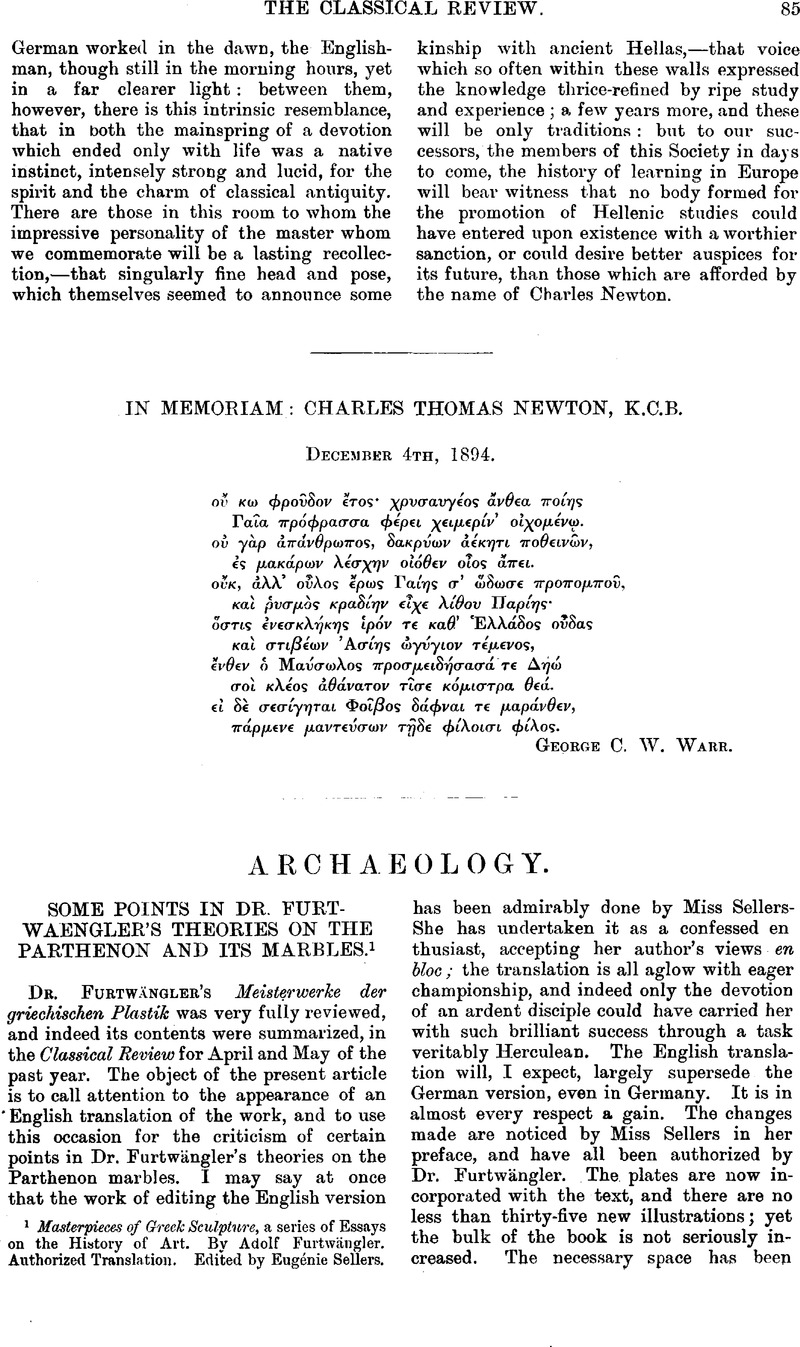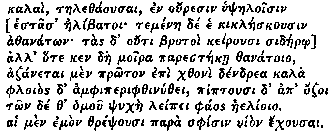No CrossRef data available.
Article contents
Abstract

- Type
- Other
- Information
- Copyright
- Copyright © The Classical Association 1895
References
page 85 note 1 Masterpieces of Greek Sculpture, a series of Essays on the History of Art. By Adolf Furtwängler. Authorized Translation. Edited by Eugénie Sellers.
page 86 note 1 In this matter of the primitive olive, well and snake cult, and the consequent close connection of Athene and Kekrops—a point I believe to be essential —I should like to express my obligations to a paper by Mr. A. G. Bather, which, I regret to say, is unpublished; also in the matter of the lamp of Kallimachos as representing the hearth of the state; but for the deductions I draw he is in no way responsible.
page 87 note 1 Philol. N.F. iv. p. 161.
page 87 note 2 Mittheilungen, 1893, p. 39.
page 89 note 1 The coin should be studied not in Rayet's wholly inadequate and inaccurate reproduction but in the phototype plate of Imhoof-Blumer, Griechische Münzen, pi. viii. 33 where the object is manifestly a cista with round lid. A similar Magnesiau type shows the child seated on the cista.
page 89 note 1 The identity of Athene and the olive-tree has been long ago pointed out by Boettielier, Baumkultus, p. 108, but he did not extend his argument to the Moriae.
page 90 note 1 Mr. Marindin points out to me a curious passage in the Homeric Hymn to Demcter (11. 22–3) which seems to bear on the human olive-goddesses. Persephone shrieked aloud as Hades bore her away, but
![]()
The λαῖαι has been marked corrupt and freely emended. Gemoll and Prof. Tyrrell both hold that it is absurd to say that Persephone was not ‘heard by gods or men or olive-trees.’ But surely it is the best of sense. It is the triple division of the hearing universe, gods, demi-gods, mortals. It is curious to find that von Wilamowitz-Moellendorf Aus Kydathen, p. 125, rightly refuses to cmend, but yet I think misses the point: ‘ Als einen recht unattischen Zug betrachte ich die ‘Ἐλαῖαι γλακαρποι… freilich sind es Nymphen die, als die. nächsten dazu das was auf der Flur vorgeht zu hören hier ihren Platz haben, aber es schickt sich nicht zu emendiren: wo möglich Sampfnymphen (γλακαρποι!) hineinzubringen. Sind etwa bloss δρες belebt? nur allerdings attisch ist es nicht die Ölbäume zu beseelen mid attisch ist es nicht, den Ölbau der Demeter zuzuweisen.’ From an authority at once so profound and so brilliant I venture, with the utmost diffidence, to differ; but I hold the giving of souls to the olive-trees to be anything rather than a ‘recht unattischer Zug.’
From the Demeter Hymn I was led to examine the others, and I find in the Hymn to Aphrodite a passage that precisely explains the midway position of the γλακαρποι Ἐλαῖαι. The son of Anchises is to be nurtured by the mountain nymphs (line 260)—
![]()
Next Aphrodite goes on (1. 267) to tell of the trees, the λται and δρες, who also will nurse the child—

The passage speaks for itself.
page 92 note 1 In a letter just received from Dr. Dörpfeld he kindly gives this view with some comment 011 the ν ᾧ τ ρχαιον ἄγαλμα of the Chandler inscription and the Strabo passage which seem to block the way, but as a full statement from himself may, we hope, be looked for before long, I will not anticipate its publication.


